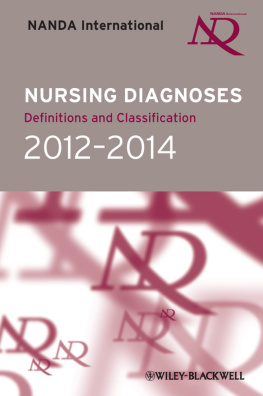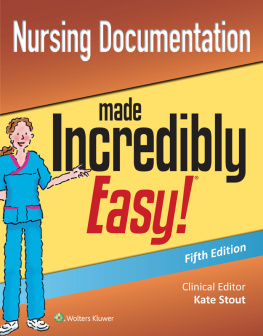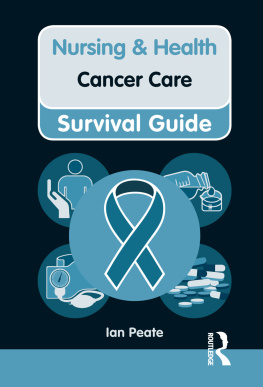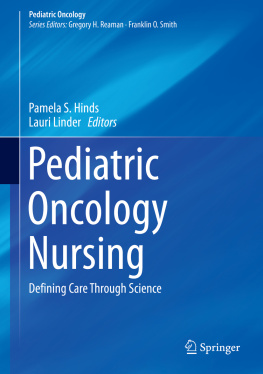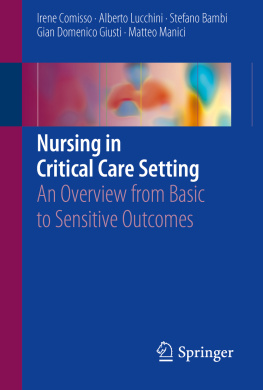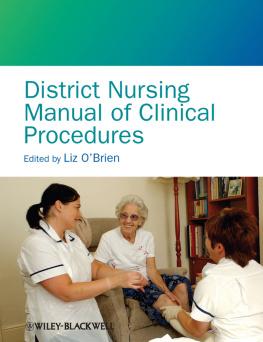Nursing Care for Patients of ENT
Starring Criss
Table of Contents
INTRODUCTION
The proposed guide is aimed at optimizing the educational process in the light of the ongoing nursing reform in the country. This is especially important, since in 1996 the state standard for the professional training of a paramedical worker was adopted.
The development of medicine significantly changes the duties of a nurse, who, in addition to direct patient care, must actively participate in both rehabilitation and disease prevention.
A significant change in the nature of the activity is the implementation of the nursing process, one of the aspects of which is to identify the patient's capabilities in meeting the universal needs necessary to maintain human life and health. The stages of this process are: 1) examination of the patient, including the collection of anamnesis, objective and laboratory studies; 2) the formulation of a nursing diagnosis, consisting of a definition of the problems that arise in the patient and disturb him at the moment (pain, fever, inability to take care of himself, etc.); 3) nursing care planning, indicating the materials and equipment necessary for the implementation of this care; 4) implementation of the planned intervention plan carried out by the nurse, as on her own initiative,
4) the final stage of the nursing process is an assessment of its effectiveness, quality analysis and summing up, taking into account the patient's opinion on the nursing activities carried out.
Introduction to otorhinolaryngology.
Organization of ENT assistance to the population.
A study of morbidity conducted in recent years has shown that up to 16% of all visits to medical institutions are caused by diseases of the ear, throat nose.
In the structure of ENT pathology, tonsillitis is in the first place, otitis media is in the second place, followed by sinusitis and other diseases of the upper respiratory tract and ear.
Angina occupies one of the first places among diseases with temporary disability and accounts for 8-10 cases per 100 employees per year,in some industries, this figure is even higher.
The level of morbidity of the population with tonsillitis in a number of regions of the Russian Federation fluctuates within 6786 cases per 1000 population. It is higher in children. In patients with chronic suppurative otitis media, this level is 3-10 per 1000.
Among the causes of mortality in hospitalized ENT patients, the first place belongs to rhinosinusogenic and otogenic intracranial complications.
The activity of a nurse is aimed at providing qualified nursing care to patients and their family members, including health promotion, disease prevention, care during illness and rehabilitation.
The nurse should know:
philosophy of nursing, to understand its essence and social significance;
clearly know the boundaries of their powers and responsibilities;
moral, ethical and legal norms that regulate the relationship of a person to a person, society, the natural environment in the field of professional activity;
functions, rules and means of communication, methods of teaching and counseling adults;
the main patterns of development and human activity in different age periods, the essence of physiological and pathological processes occurring in the body, their impact on lifestyle; eight
anatomical, physiological and psychological characteristics, universal human needs in different age periods;
the system of organization of medical care and the principles of budget-insurance medicine in Russia;
the structure of medical institutions, functional responsibilities, principles of organization and remuneration of medical personnel, certification, licensing and quality control of medical care;
basics of a healthy lifestyle, forms and methods of sanitary and educational work;
The nurse must be able to:
ensure a high level of professional communication;
prepare a workplace, rationally organize one's work in medical and preventive institutions (MPI);
plan work and analyze indicators that testify to the effectiveness of their own activities;
provide a safe environment for the patient and staff;
ensure the infectious safety of the patient and staff (compliance with the sanitary-hygienic and anti-epidemic regime);
perform standardized nursing technologies (preventive, therapeutic and diagnostic manipulations and activities);
to carry out all stages of the nursing process during the period of daily life, illness and rehabilitation of the patient;
provide nursing counseling and education to the patient and/or his family;
provide patients and victims with emergency pre-medical care in case of injuries, poisoning, acute conditions and in the focus of disasters in accordance with state standards;
keep records and analyze the demographic and social structure of the population at the site, carry out medical and social patronage
promote a healthy lifestyle and conduct health education;
draw up accounting and reporting medical documentation;
coordinate their professional and social activities with the work of other employees and teams in the interests of the patient;
observe safety precautions and measures to protect the health of personnel;
independently acquire additional professional knowledge and skills.
Functional duties of the nurse of the otorhinolaryngological office (department):
Preparation for work of tools, medicines and documentation.
During the reception of patients, carry out the following diagnostic manipulations as directed by the doctor:
a) the study of hearing in whispered and colloquial speech; b) olfactometry; c) measurement of body temperature;
d) taking a swab from the nose, pharynx, external auditory canal.
Active participation in the treatment of patients: a) infusion of drops into the nose and ear;
b) lubrication of the mucous membrane of the nose and pharynx;
c) injection of medicinal powder into the ear, nasal cavity; d) toilet ears; e) introduction of turundas with medicinal substances into the ear;
f) removal of sulfur plugs by washing the external auditory canals; g) blowing out the ears according to Politzer;
h) Massage of the eardrums (using a Zig-le pneumatic funnel); i) the introduction of antibiotics into the maxillary (maxillary) sinus by the method of movement;
j) Washing the lacunae of the palatine tonsils;
l) the imposition of a warming semi-alcohol compress.
Perform the following procedures as directed by your doctor:
a) filling out various medical documentation (referrals for treatment, examination, statistical coupons, etc.); b) issuing a certificate of incapacity for work;
c) registration of transactions and filling in the transaction log; d) registration of dispensary patients.
At the end of the work, the nurse must process the instruments, remove the medicines, and put the medical records in order.
Methods and techniques of endoscopic examinations of ENT organs. The role and participation of the nurse in the examination of the patient.
The role of the nurse in preparing the premises (office, dressing room, operating room) for receiving patients, conducting examinations and providing assistance to them is also important. To do this, it is necessary to explain to students some basic rules for such technological processes as washing hands, putting on and taking off gloves and a gown, covering a sterile table (instrumental and operating room).
Hand washing technology
Due to the fact that the hands of staff are very often the carrier of infection, it is very important to be able to wash their hands and treat it with due responsibility. The micro flora of the skin of the hands consists of both permanent and temporary microorganisms. Permanent ones live and multiply on the skin, while temporary ones appear only as a result of hand contamination. About 90% of permanent microorganisms are located in the surface layers of the skin, the rest can live in the deep layers of the skin. Washing hands with plain soap lifts microorganisms from the surface of the skin and then rinses them off with running water, thus removing most of the microbial flora. Permanent microorganisms from the deep layers of the skin cannot be removed with a simple soap, so a bactericidal is required. Temporary microorganisms often present on the skin thirteenhands of personnel, as well as those obtained from contaminated or infected patients, can cause nosocomial infections. There are hygienic and surgical treatment of hands. Hygienic disinfection of hands involves the removal or destruction of surface pathogenic or opportunistic microflora in order to prevent its spread to surrounding objects and patients served. Hand hygiene must be carried out by all staff on a regular basis. The processing method is chosen depending on the work performed.


